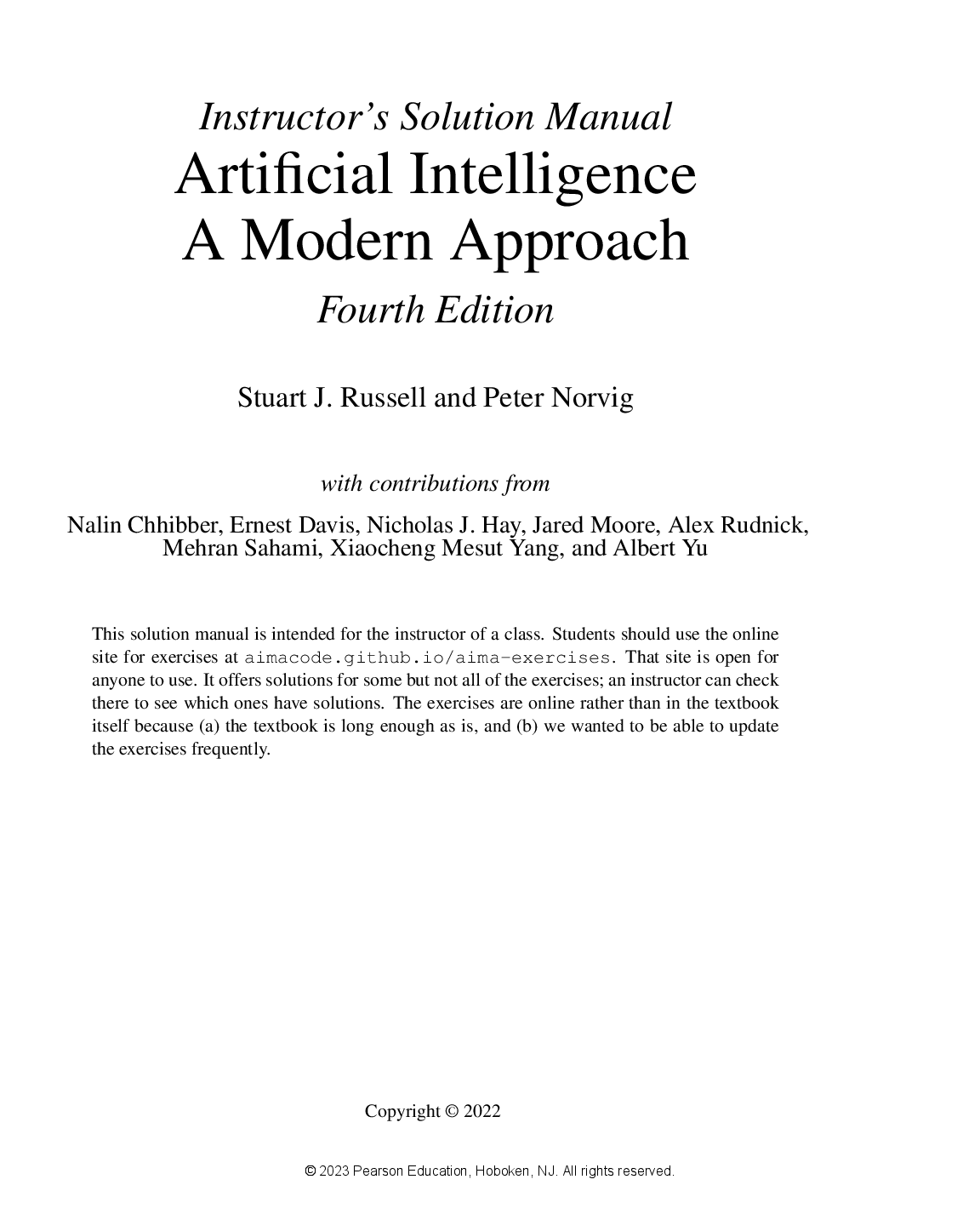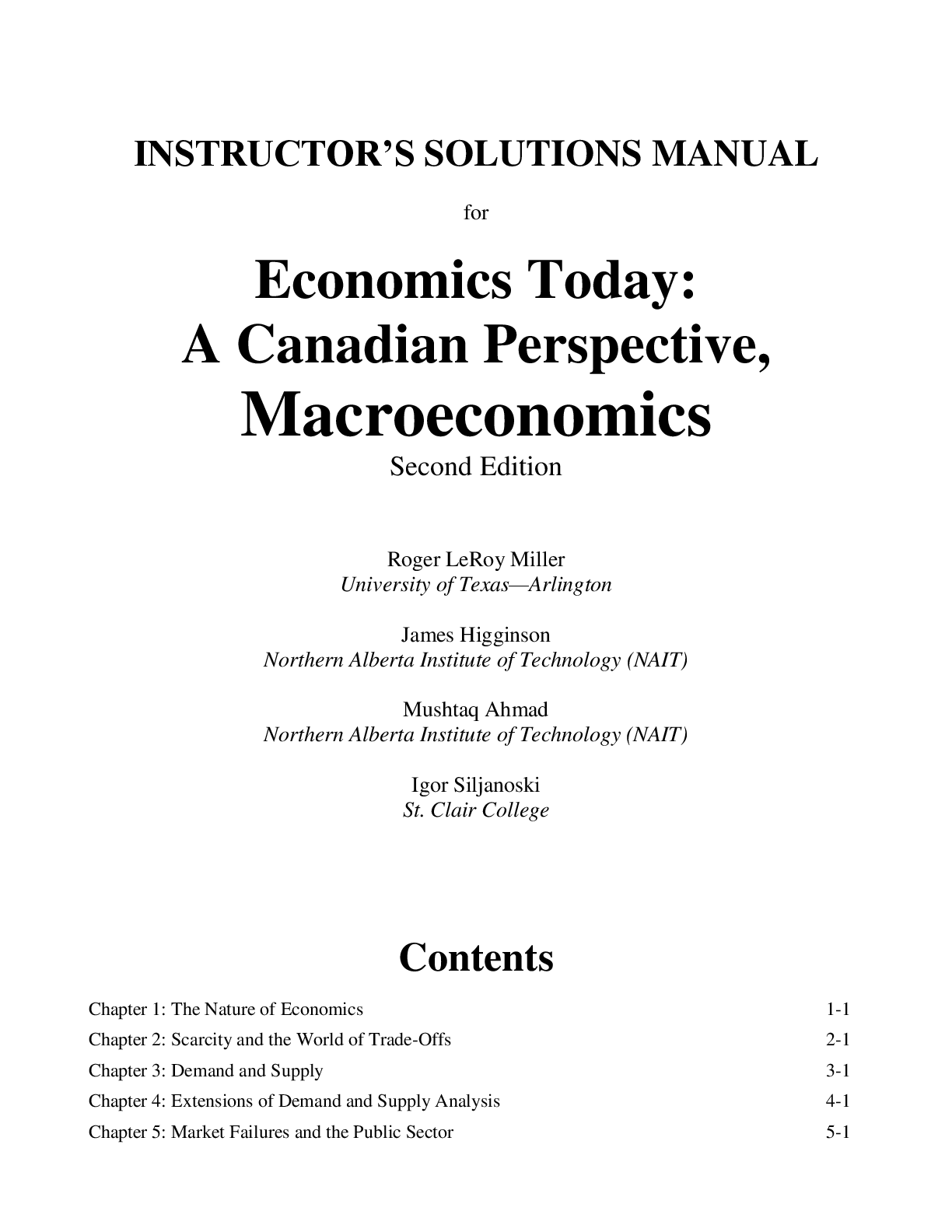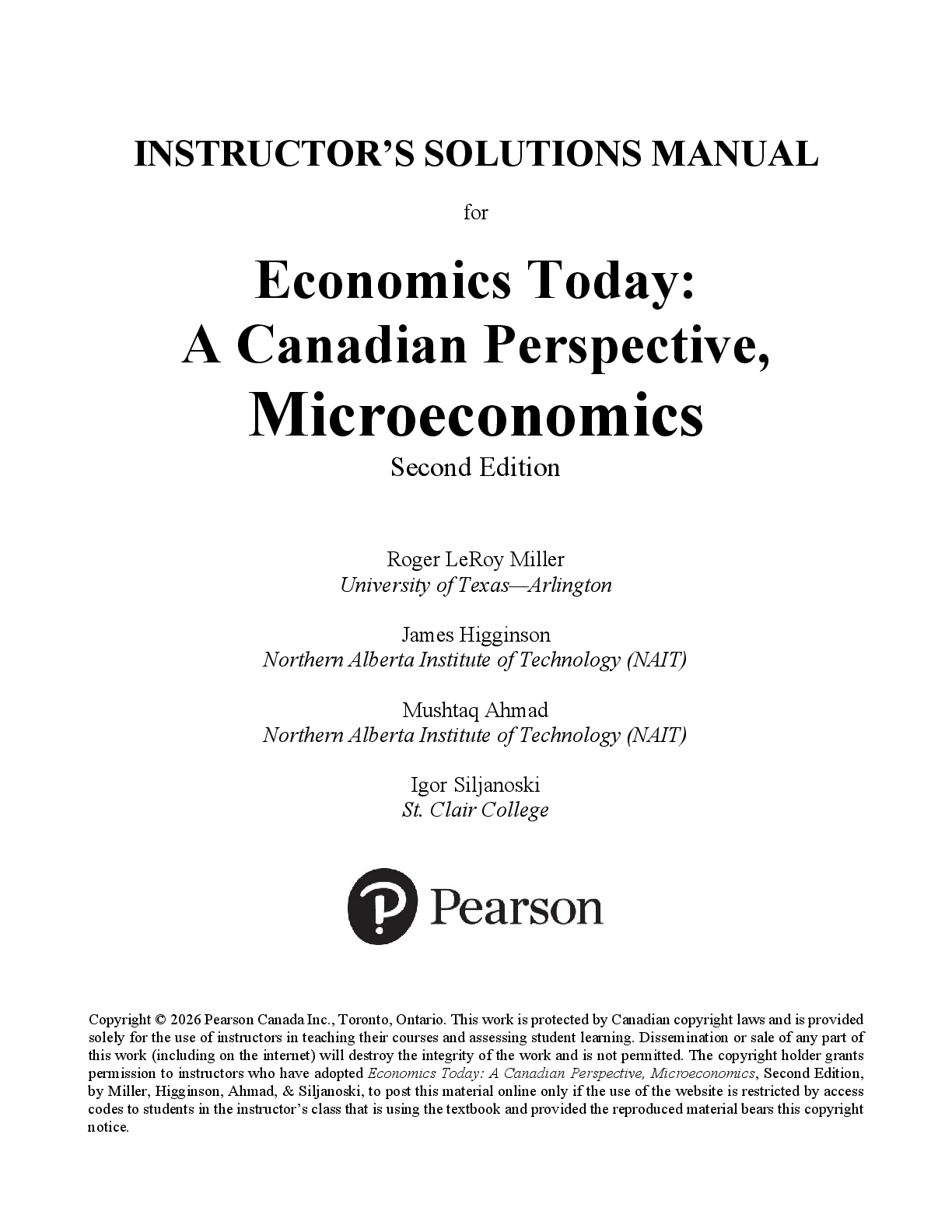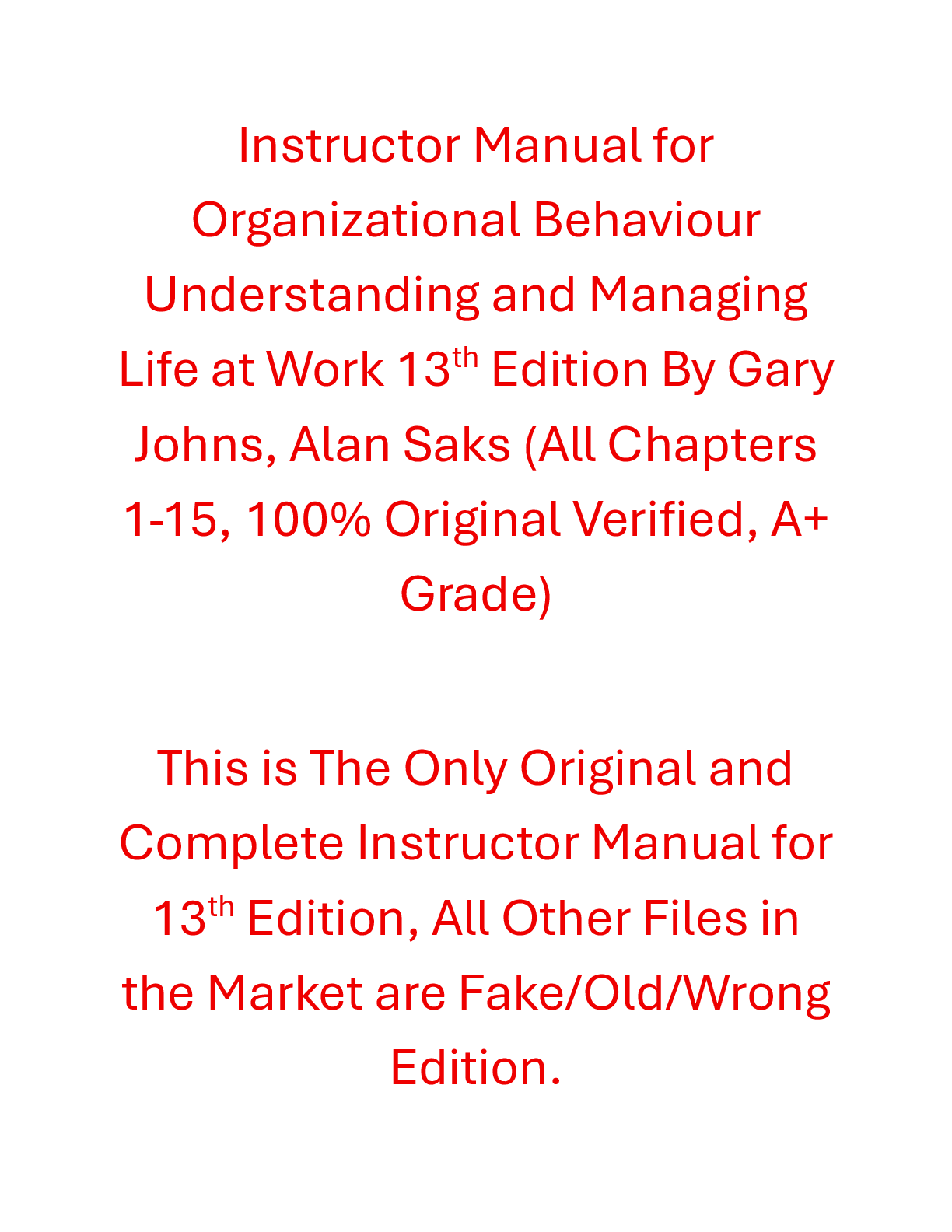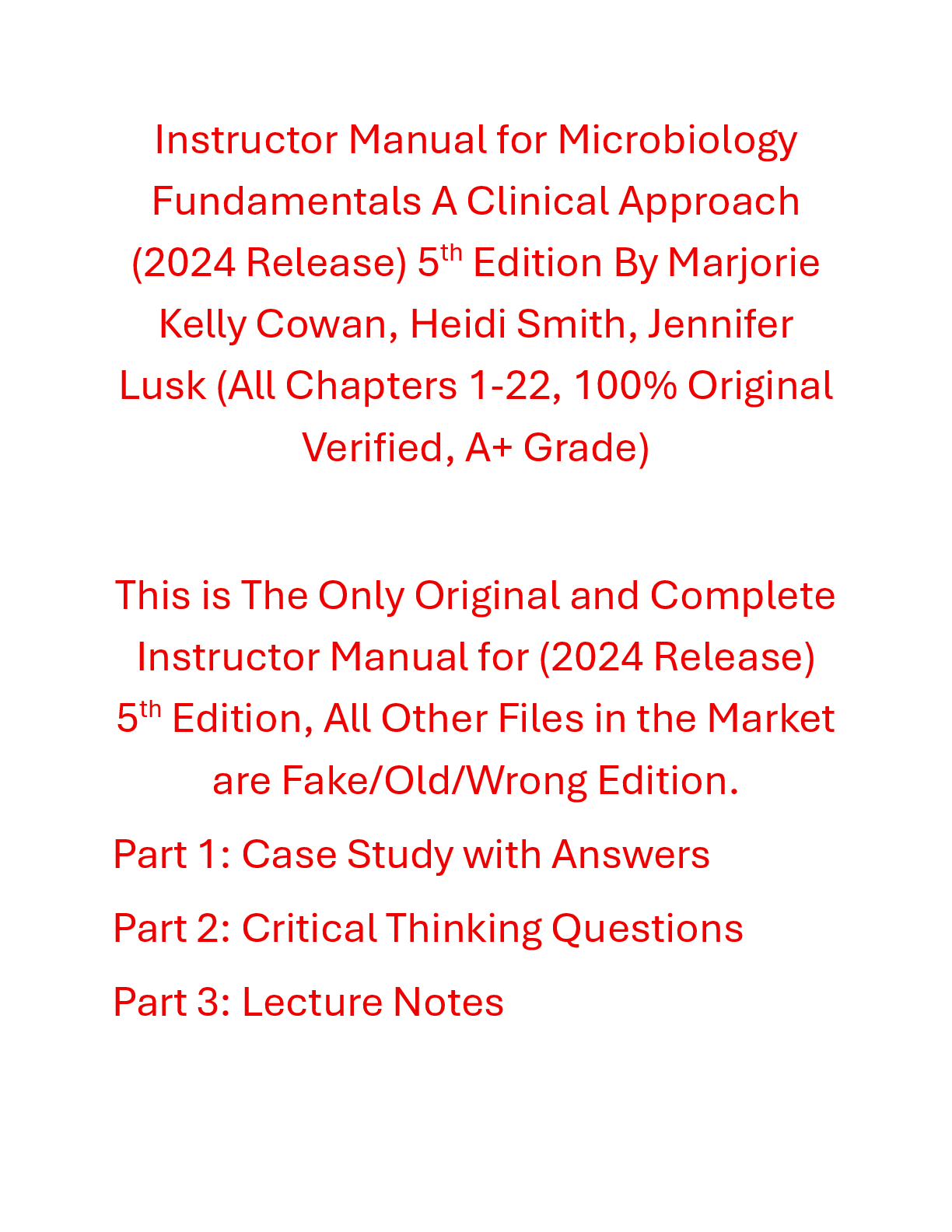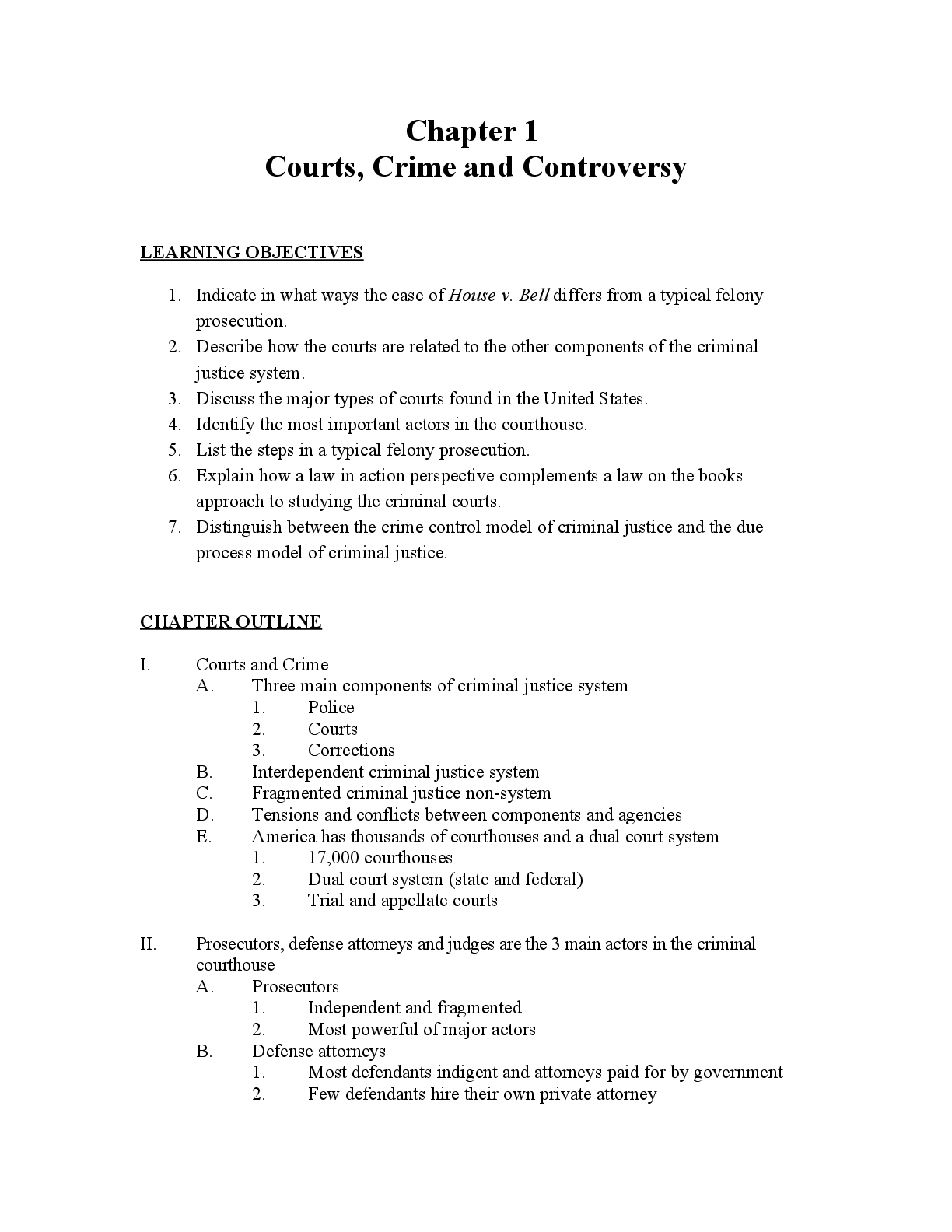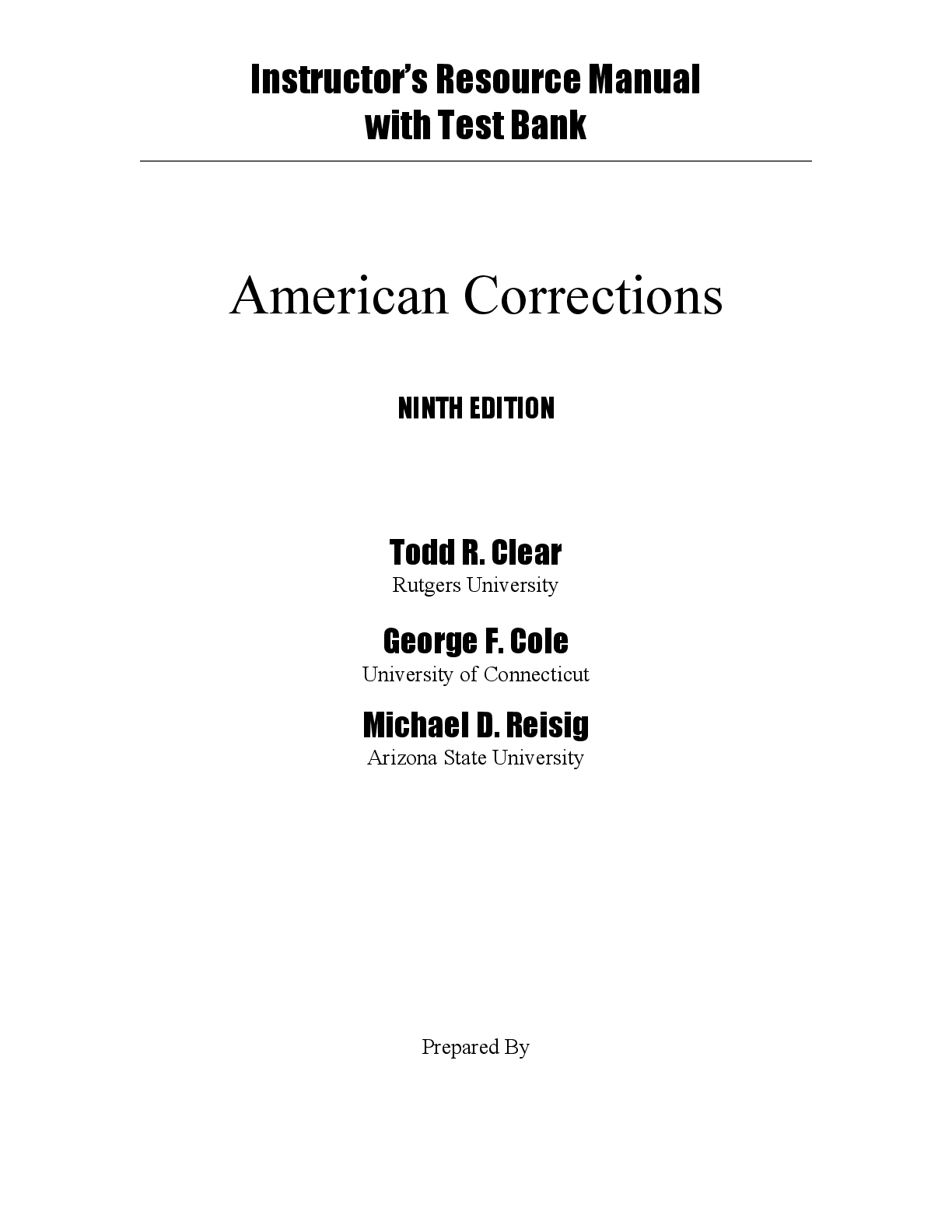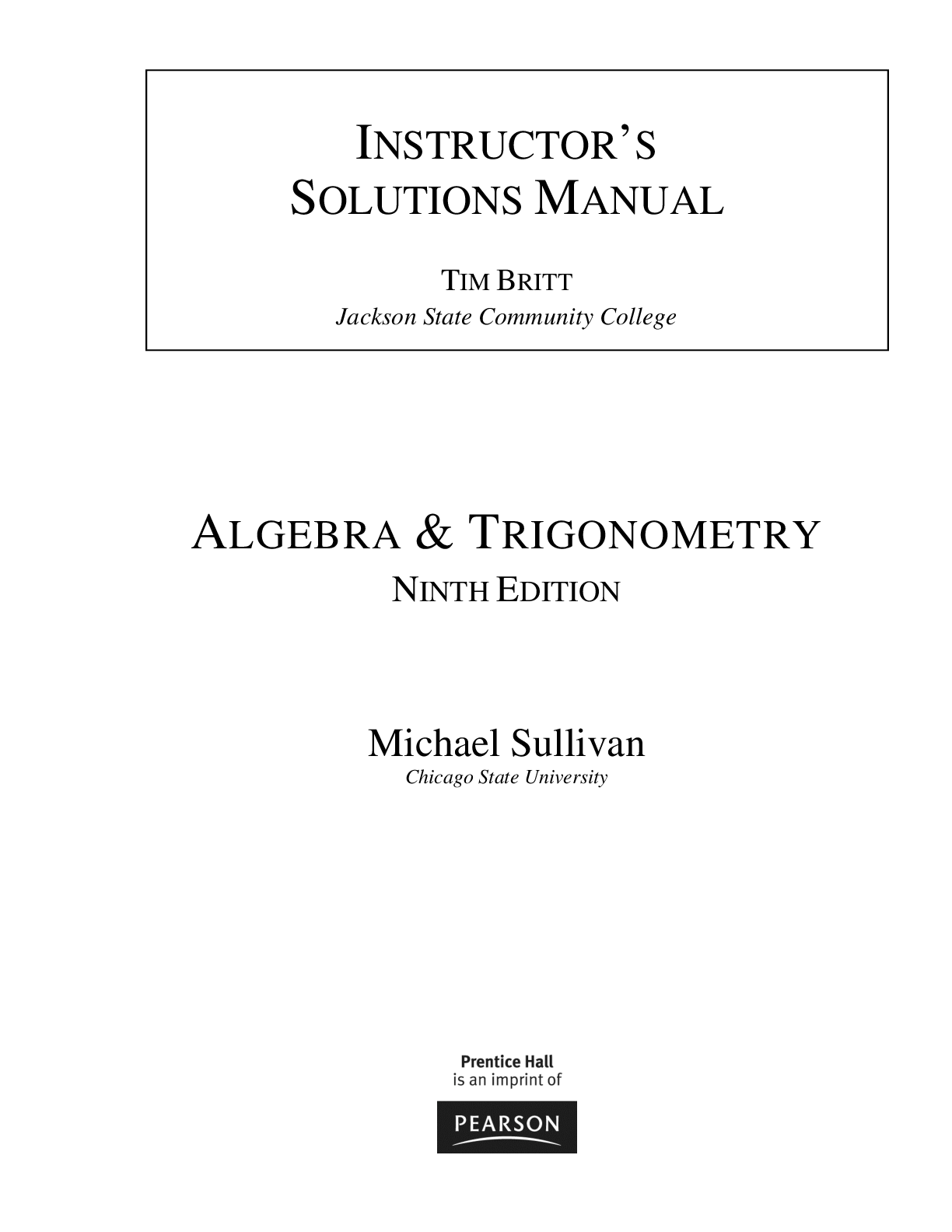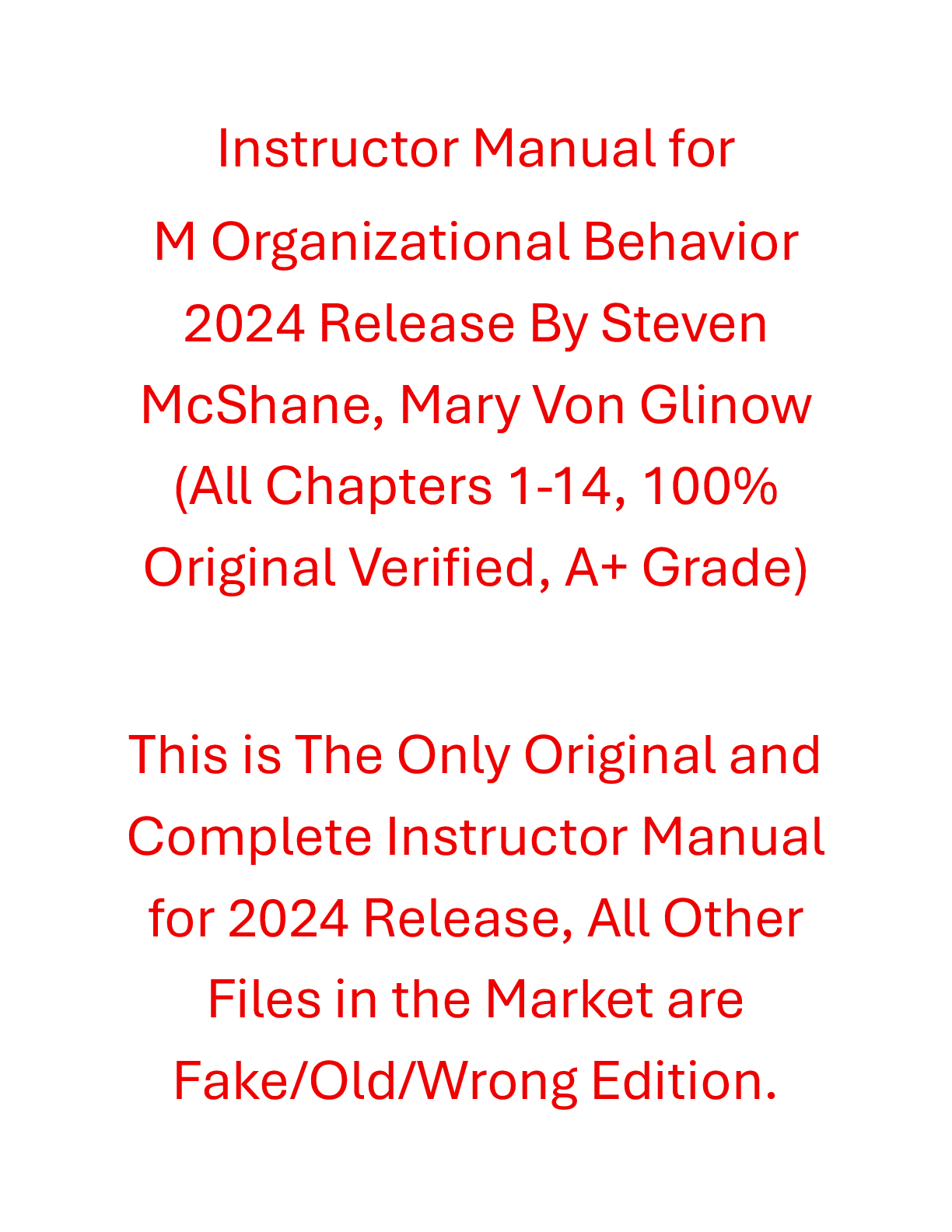Computer Science > INSTRUCTOR MANUALS > Instructor’s Solution Manual Artificial Intelligence A Modern Approach 4th Edition Stuart J. Russe (All)
Instructor’s Solution Manual Artificial Intelligence A Modern Approach 4th Edition Stuart J. Russell and Peter Norvig
Document Content and Description Below
Instructor’s Solution Manual Artificial Intelligence A Modern Approach Fourth Edition Stuart J. Russell and Peter Norvig with contributions from Nalin Chhibber, Ernest Davis, Nicholas J. Hay, ... Jared Moore, Alex Rudnick, Mehran Sahami, Xiaocheng Mesut Yang, and Albert Yu Exercise 1.1.#DEFA Define in your own words: (a) intelligence, (b) artificial intelligence, (c) agent, (d) rationality, (e) logical reasoning. Exercise 2.1.#DFAG Define in your own words the following terms: agent, environment, sensor, actuator, percept, agent function, agent program. Exercise 3.1.#FORM Explain why problem formulation must follow goal formulation. Exercise 4.1.#ASTF For each of the following assertions, say whether it is true or false and support your answer with examples or counterexamples where appropriate. Exercise 5.1.#ORAC Suppose you have an oracle, OM(s), that correctly predicts the opponent’s move in any state. Using this, formulate the definition of a game as a (single-agent) search problem. Describe an algorithm for finding the optimal move. Exercise 6.1.#AUSM How many solutions are there for the three-color map-coloring problem in Figure 6.1? How many solutions if four colors are allowed? Two colors? Exercise 17.1.#MDPX For the 4 × 3 world shown in Figure 17.1, calculate which squares can be reached from (1,1) by the action sequence [Right; Right; Right; Up; Up] and with what probabilities. Explain how this computation is related to the prediction task (see Section 14.2.1) for a hidden Markov model 23.1 Language Models Exercise 23.1.#TXUN Read the following text once for understanding, and remember as much of it as you can. There will be a test later 26.4 Robotic Perception Exercise 26.4.#MCLB Monte Carlo localization is biased for any finite sample size—i.e., the expected value of the location computed by the algorithm differs from the true expected value—because of the way particle filtering works. In this question, you are asked to quantify this bias. To simplify, consider a world with four possible robot locations: X = fx1; x2; x3; x4g. Initially, we draw N ≥ 1 samples uniformly from among those locations. As usual, it is perfectly acceptable if more than one sample is generated for any of the locations X. Let Z be a Boolean sensor variable characterized by the following conditional probabilities: 28.1 AI Components Exercise 28.1.#FUTP Compare the price of various component technologies used in AI, and create charts for how those prices have changed over the last twenty years. [Show More]
Last updated: 8 months ago
Preview 1 out of 585 pages
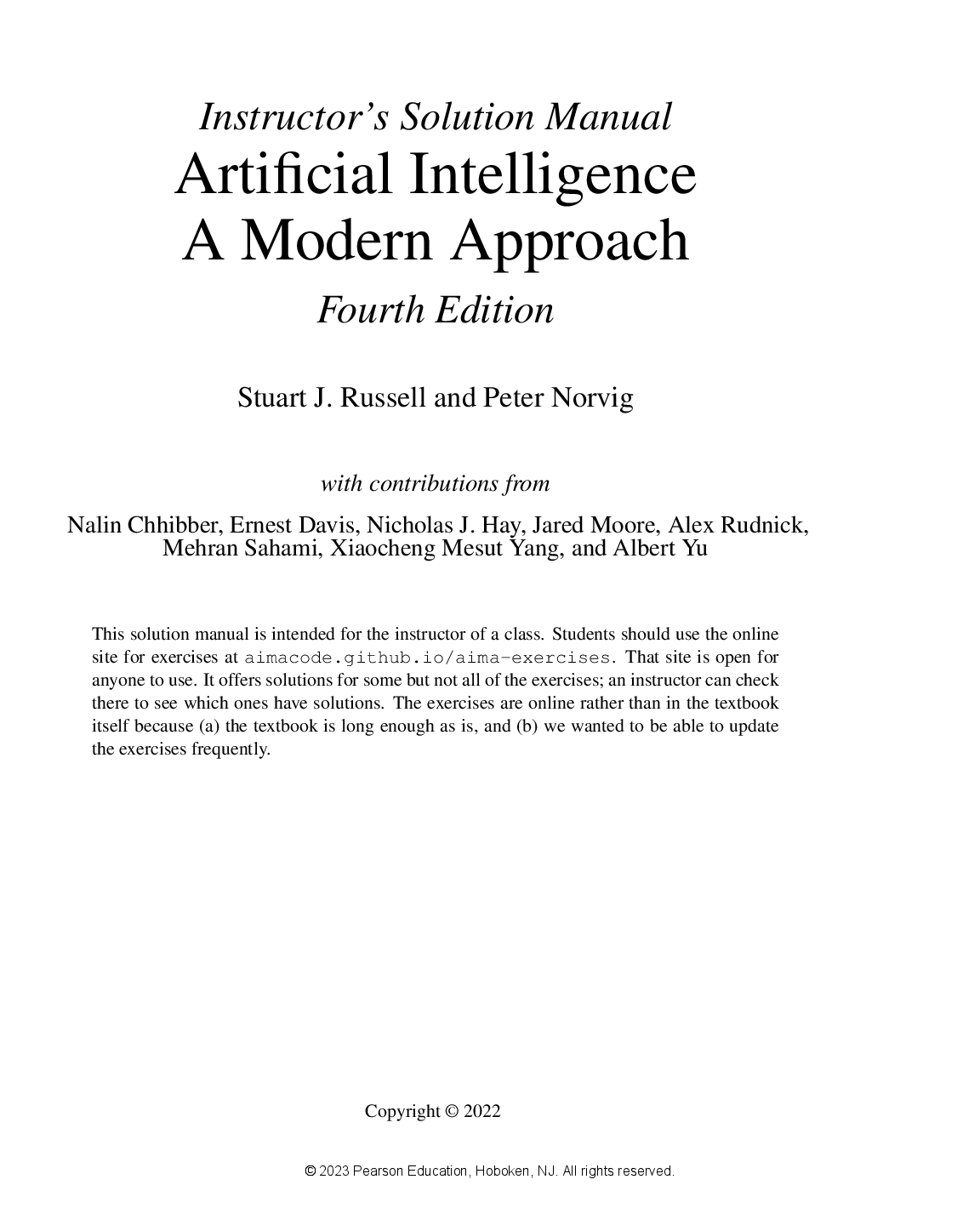
Buy this document to get the full access instantly
Instant Download Access after purchase
Buy NowInstant download
We Accept:

Reviews( 0 )
$20.50
Can't find what you want? Try our AI powered Search
Document information
Connected school, study & course
About the document
Uploaded On
Mar 06, 2025
Number of pages
585
Written in
All
Additional information
This document has been written for:
Uploaded
Mar 06, 2025
Downloads
0
Views
54

